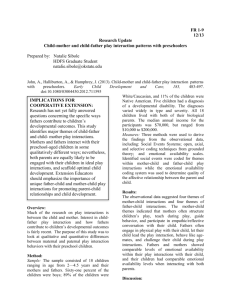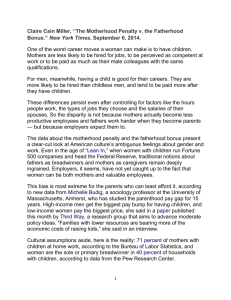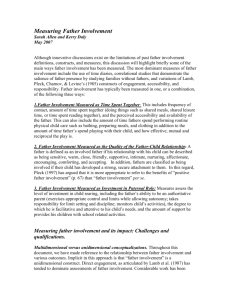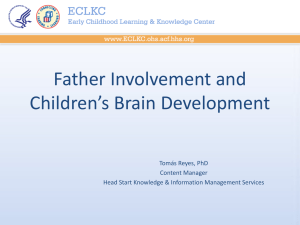Continued
advertisement
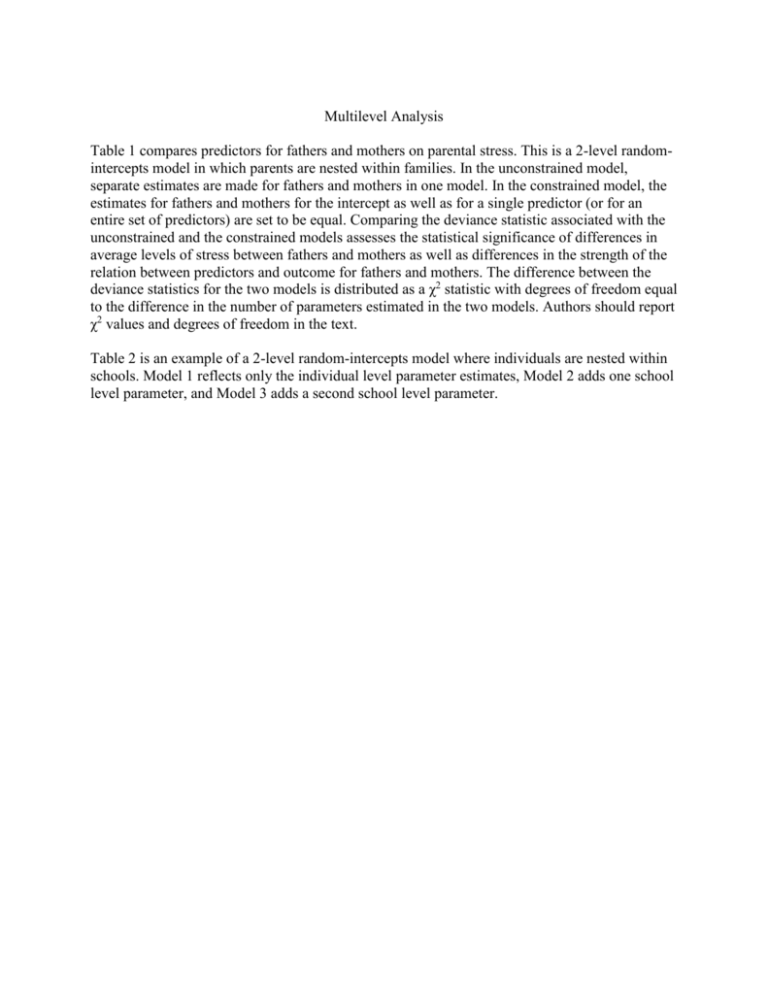
Multilevel Analysis Table 1 compares predictors for fathers and mothers on parental stress. This is a 2-level randomintercepts model in which parents are nested within families. In the unconstrained model, separate estimates are made for fathers and mothers in one model. In the constrained model, the estimates for fathers and mothers for the intercept as well as for a single predictor (or for an entire set of predictors) are set to be equal. Comparing the deviance statistic associated with the unconstrained and the constrained models assesses the statistical significance of differences in average levels of stress between fathers and mothers as well as differences in the strength of the relation between predictors and outcome for fathers and mothers. The difference between the deviance statistics for the two models is distributed as a χ2 statistic with degrees of freedom equal to the difference in the number of parameters estimated in the two models. Authors should report χ2 values and degrees of freedom in the text. Table 2 is an example of a 2-level random-intercepts model where individuals are nested within schools. Model 1 reflects only the individual level parameter estimates, Model 2 adds one school level parameter, and Model 3 adds a second school level parameter. Table 1 Multilevel Model Results Predicting Fathers’ and Mothers’ Parenting Stress From Child Temperament and Familial Factors Using Full Maximum Likelihood Estimation (N = 300) Unconstrained Constrained Fathers Model Unstandardized SE Mothers z ratio Coefficient Intercept Unstandardized SE Couple z ratio Coefficient Unstandardized SE z ratio χ2 Coefficient 28.12 .29 30.40** 30.18 .25 34.90** 29.50 .27 32.50** .09 .39 .08 3.20** .37 .09 3.18** .38 .09 3.19** .01 satisfaction -.18 .10 -2.05* -.08 .04 -1.50 -.17 .10 -2.02* .06 Family cohesion -.25 .12 -2.10* -.23 .11 -2.04* -.24 .12 -2.08* .01 Years married -.12 .05 -1.80 -.11 .06 -1.74 -.12 .06 -1.77 .02 Child temperament Marital Table 1 Continued Estimated parameters Deviance 13 399.85 Note: Convergence criterion = .001. *p < .05. **p <. 01. 6 400.38 Table 2. Multilevel Model Results Predicting Child Behavior Problems From School and Individual Level Variables Using Full Maximum Likelihood Estimation (N = 900 individuals from 20 schools) Child Behavior Problems Model 1 Predictors Unstandardized Model 2 SE Coefficient Unstandardized Model 3 SE Coefficient Unstandardized SE Coefficient School-level Teacher-child ratio -.92** .08 M socioeconomic status -.84** .08 -3.12** 1.48 Individual-level Intercept 40.12** .60 38.20** .59 35.80** .55 .29* .08 .28* .08 .27* .08 Closeness to father -.70** .10 -.68** .10 -.65** .10 Closeness to mother -.40** .09 -.38** .09 -.35** .09 Temperament Table 2 Continued Estimated parameters Deviance Note: Convergence criterion = .001. *p < .05. **p < .01. 6 7 8 374.38 369.80 365.60
